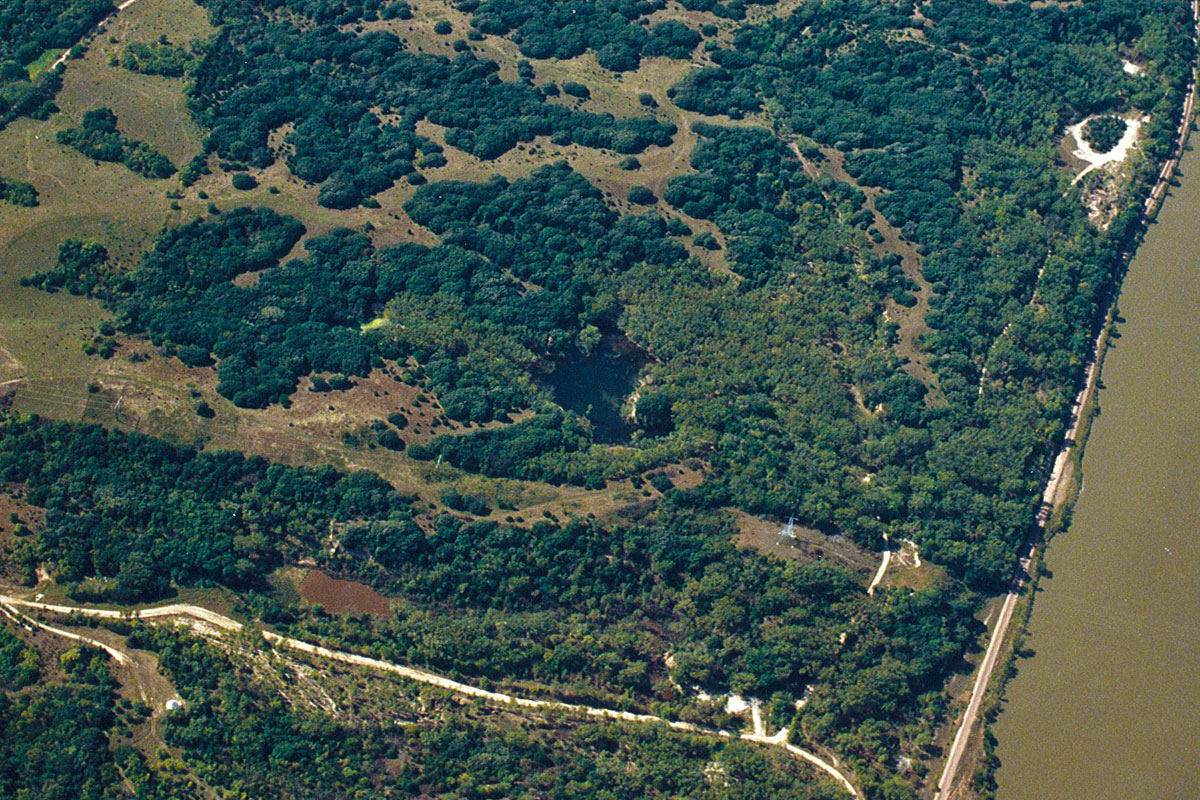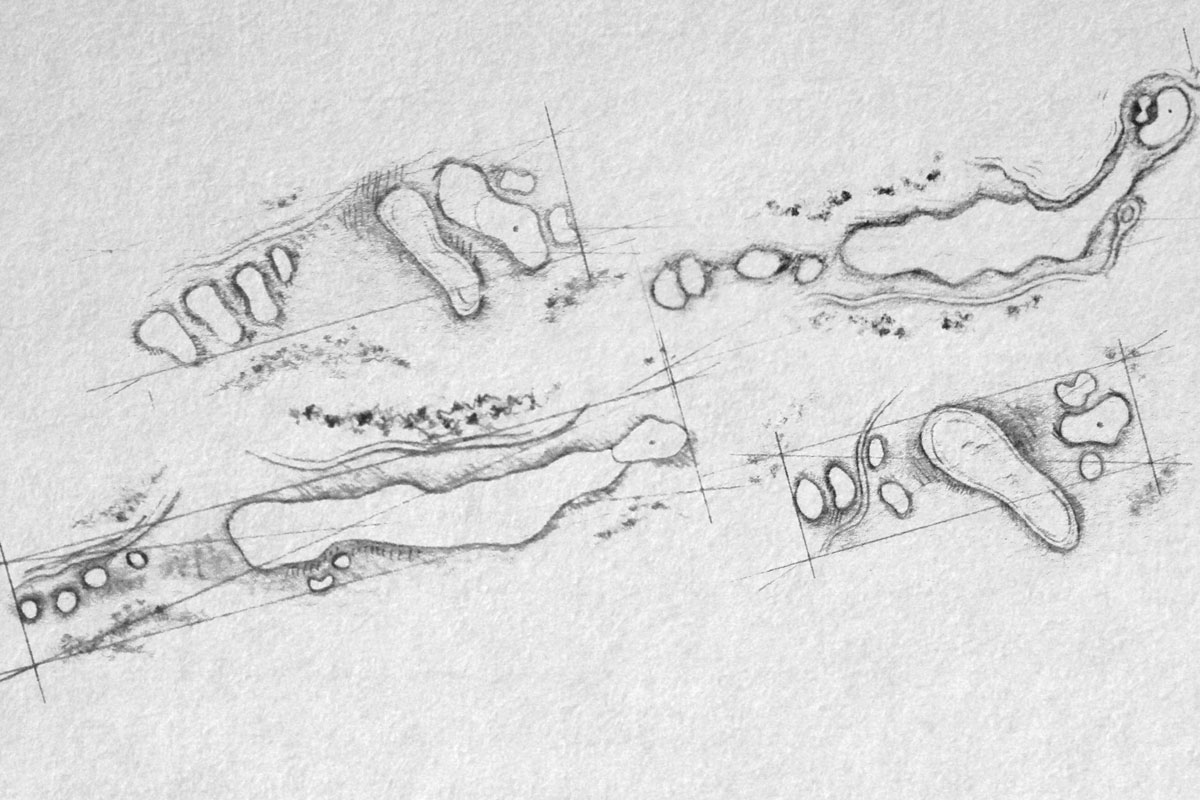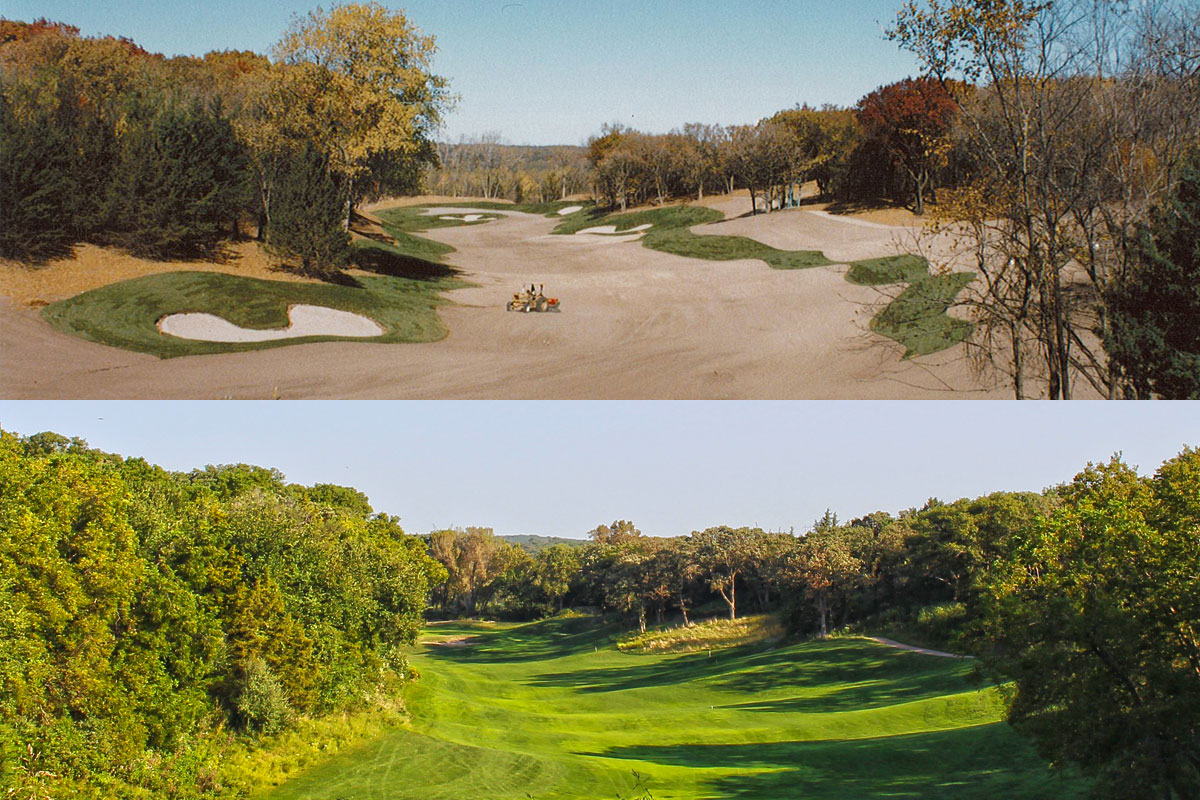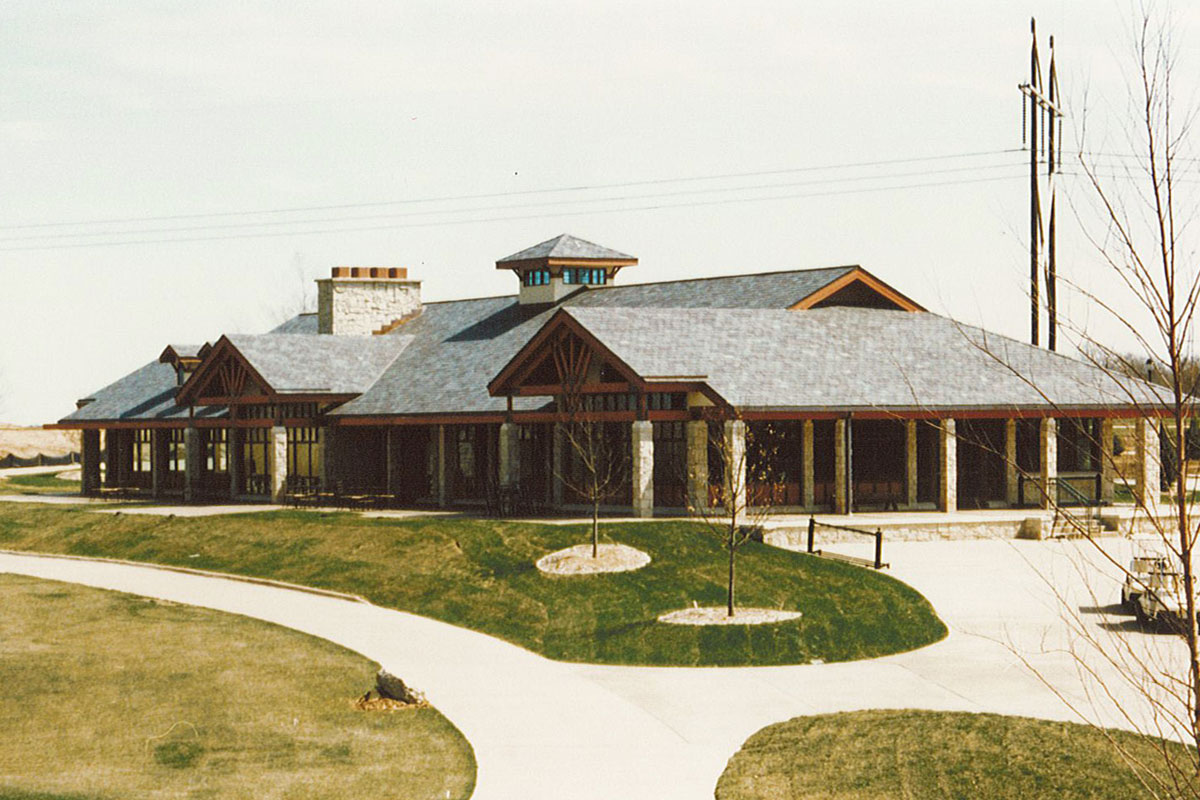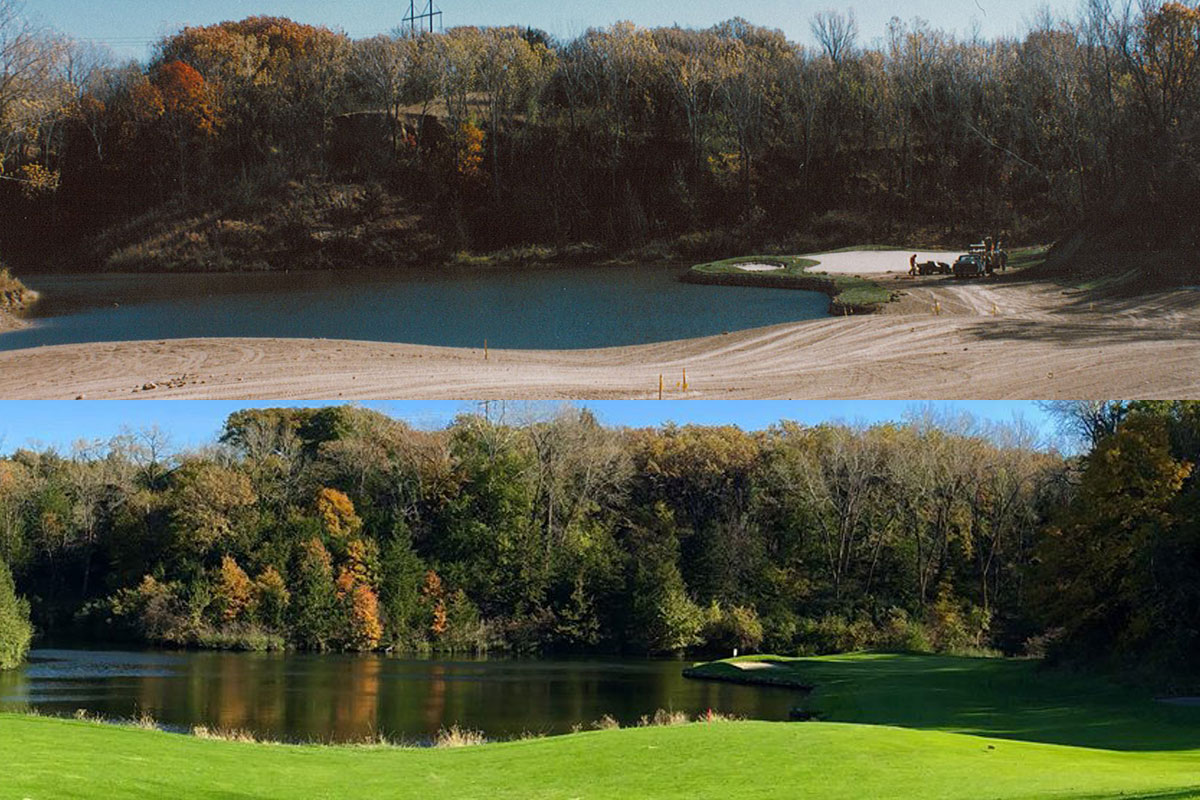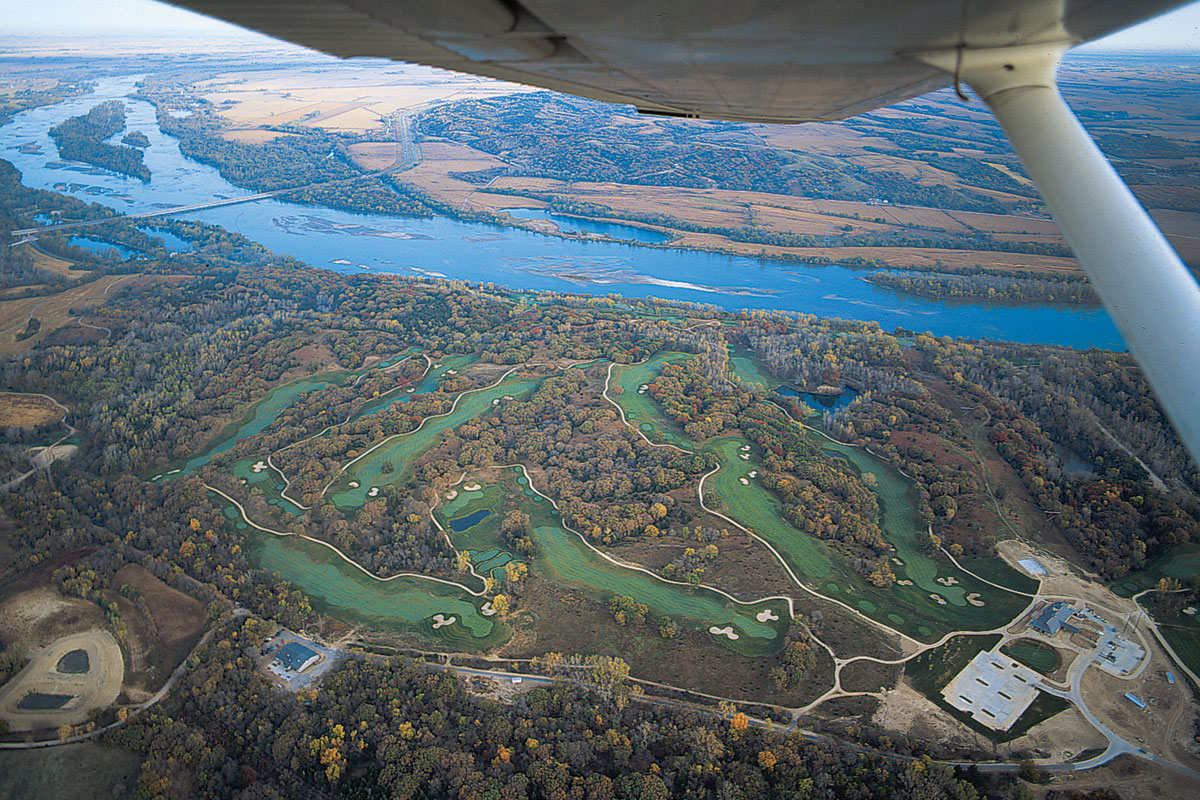History of Quarry Oaks
John Keats, an 18th Century English Romantic Poet, said it best – “A thing of beauty is a joy forever.” It is hard to imagine a statement that more appropriately captures the natural wonders of Quarry Oaks Golf Course. One of the great joys of golf is that it not only furnishes the player a challenging and rewarding physical experience, it also allows him to appreciate nature in all its glory. Few courses furnish the golfer as much challenge and appreciation as Quarry Oaks.
Spread over a range of limestone hills rising from the banks of the Platte River, dotted with magnificent bur oaks and cottonwoods that stand like soldiers protecting its fairways, populated by deer, wild turkeys, eagles, geese, and birds of countless varieties. Quarry Oaks pleases the visitor who believes that Nebraska is all flat prairie and corn fields.
Built in part on an abandoned quarry that furnished limestone aggregate to Nebraska’s construction industry, and in close proximity to the broad but shallow Platte River, Quarry Oaks offers everything a golfer desires: challenge, reward and beauty. How and why it came to be built, and how a course so gorgeous sprang up in rural Nebraska, is the history you’re about to read.
In the 1970’s, a professor of archeology at the University of Nebraska – Lincoln, aware of previous Native American occupation of the high bluffs along the Platte River, requested permission to explore the Kerford quarry site, in search of such artifacts.
A month later, the Abel Family received a thank you letter from the professor stating that he had found no artifacts, and offered his opinion that the land would make a wonderful golf course.
Rugged pasture land in sparsely populated rural Cass County, an area with virtually no paved roads, scarcely offered an ideal venue for attracting crowds of golfers.
In the late 1980’s, George and his youngest son, Jim, now President of the Abel family business, had discussions with Dick Youngscap, developer of the world-class Firethorn and Sand Hills golf courses. Youngscap had engaged Pete Dye, one of America’s most noted golf course architects, to design Firethorn. The Abel’s asked Dye to look at the quarry site and offer an opinion as to its suitability for a golf course. Youngscap walked the site with Dye’s principal associate who concluded that the site was too severe for course construction. Youngscap advised the Abel’s to consider buying some 200 acres that abutted the quarry on the south, ground that was more suitable and less severe. After careful consideration, the Abel’s decided they still preferred to develop the original site.
The area’s developmental plans along Interstate 80 were well underway and in 1992, George and Jim Abel became even more intent on the possibility of a public golf course on the old quarry site.
That summer, in spite of prior professionals’ opinions, Roger Severin and Dan Muhleisen of Olsson Associates, a Lincoln engineering firm, developed a preliminary plan to lay out a championship course on the site.
John LaFoy, a golf course architect from South Carolina, was asked to design the Abel’s vision of a masterpiece golf course set above the majestic Platte River. LaFoy had done renovation projects at the famed Augusta National Golf Course, site of the Masters, and at the time, was working on a course renovation project at the Country Club of Lincoln.
John LaFoy walked the quarry site in 1993. He immediately grasped its potential for a spectacular golf course. The huge mature trees, abundance of wildflowers and native grasses and stunning views of the Platte River gave promise of a course that would offer golfers both an aesthetic and challenging experience. LaFoy was uniquely able to draw such a conclusion.
LaFoy has designed over 30 new golf courses and architected 80 renovations and 40 course modifications. His work has encompassed all kinds of terrain, and thus he was able to perceive the promise of greatness at the Quarry Oaks site.
As he planned Quarry Oaks, LaFoy utilized several techniques that give a golf course the John LaFoy stamp – big greens, and use of natural conditions, such as Quarry Oaks’ par 3 15th Hole, where the golfer must carry a tee shot over the cavernous quarry that gives the course its name.
He agreed to take the preliminary engineering studies prepared by Olsson and Associates and prepare a course layout. The LaFoy plans were enthusiastically accepted by the Abel family.
Landscapes Unlimited, the nation’s premier golf course developer, headed by Lincoln resident Bill Kubly, was engaged to construct the course. Work began on Quarry Oaks in April 1995. The entire project was completed before Christmas of 1995, much faster than the normal year necessary to build a championship 18-hole course.
Bob Armstrong and Curt Grieser of Landscapes Unlimited, in general oversight of the project, worked closely with Dan Muhleisen of Olsson Associates in solving the often-harrowing construction problems.
Much of the land incorporated into the golf course contains an impervious ledge of limestone that precludes the percolation of surface water downward into subterranean pools. Both Landscapes Unlimited and Olsson Associates searched in vain for well sites that would yield water to irrigate the golf course. The problem was solved by pumping water uphill out of the quarry lake on the 17th Hole. Additionally, a permit was secured from the Nebraska Department of Natural Resources to take water from a small sliver of land that runs at river level below the bluffs on which much of the back nine is located.
The clubhouse was built by Sampson Construction Company, using plans developed by Clark Enersen Partners. One intriguing aspect of the clubhouse, occurring through sheer happenstance, was the roofline of the west side of the building, which, when viewed from terrain higher than the clubhouse, looks remarkably like the outline of the state of Nebraska.
As the year 1995 drew to a close, the course had taken shape, even though the fairways, greens and tees were seeded much later in the fall than normally occurred. Quarry Oaks lay beneath a blanket of snow, ready for its initial christening when spring came to the midlands in 1996.
The warm air and fresh breath of spring in 1996 awakened the seed that laid dormant all winter, and soon fairways, tees and greens began to signal what a verdant masterpiece Quarry Oaks was destined to be.
As the course began to take final shape, several concluding steps were necessary. Thirty acres of land were purchased to afford easier access to the areas where the groundskeeping shop and retention ponds were located, and an additional 30 acres were purchased to allow a reconfiguration of the entrance road and installation of landscaping on its shoulders.
A small abandoned cemetery, located adjacent to the fourth Hole tee, was fenced and a memorial plaque was erected. The cemetery holds the graves of several infants and children who died in the 1860’s. Efforts to find any records of the cemetery, or of the families of the children buried there, have proved unavailing.
NEBCO contracted with Evergreen Alliance Golf Limited of Dallas, Texas, to staff and manage the course. Throughout the summer of 1996, the course and clubhouse were fine tuned as the staff made itself ready for the opening in the spring of 1997.
In April of 1997, the grand opening of the course took place, and play began in earnest. Golfers from all over Nebraska and neighboring states flocked to the course and enthusiastically sang its praises. The summer was, even for Nebraska, a scorcher, and the hot sun and high humidity caused a die-out of much of the new grass on tees and fairways. The problem was difficult to rectify, but the addition of more sprinkler heads to guarantee total irrigation coverage and increasing air flow across the course alleviated the issue.
The clubhouse has also been used for meetings and events. In 2004 Sampson Construction built an addition to the facility, so that it can accommodate even larger functions. Located between Omaha and Lincoln, Quarry Oaks has become a popular venue for business meetings, weddings and other special occasions.
The acceptance Quarry Oaks has gained among the golfing community, the unparalleled vistas that it offers, and its unique features and wildlife populace all fair well for it taking its place on the roster of America’s greatest golf courses.



